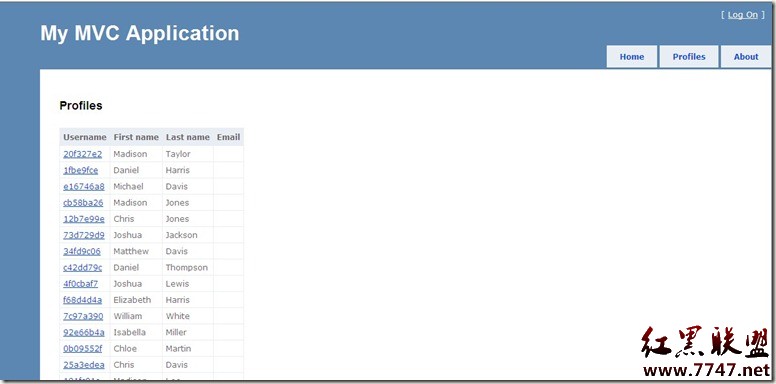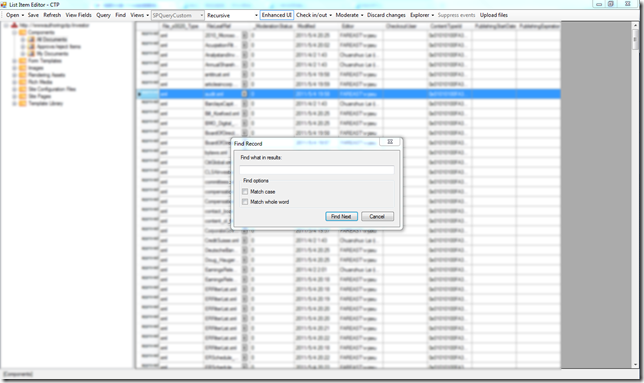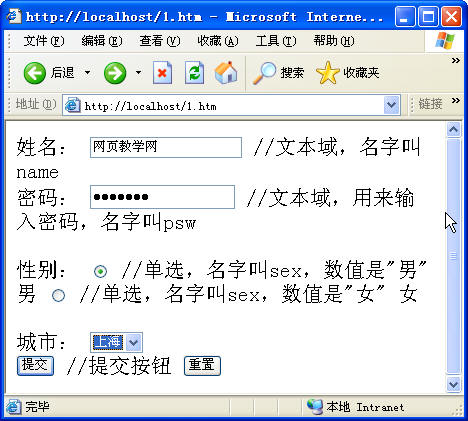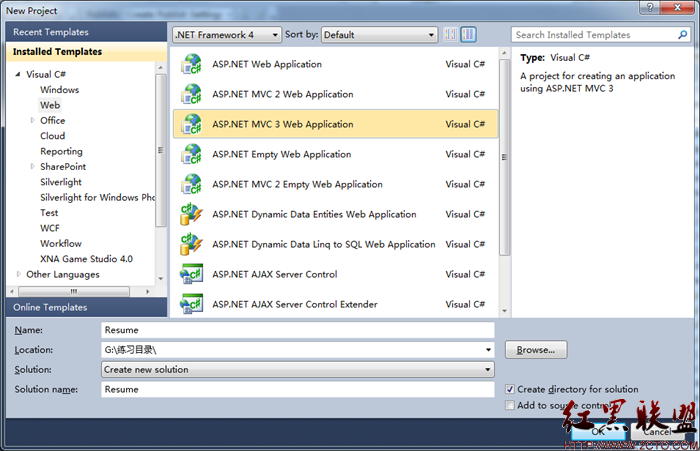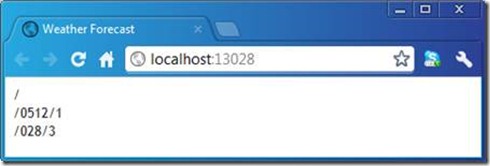单点登陆.NET的简单实现
系统的基本架构
我们假设一个系统System包含Service客户服务中心、Shop网上购物中心和Office网上办公中心三个独立的网站。 Service管理客户的资料,登录和注销过程。不论客户访问System的任何一个页面,系统都会转到登录界面,在用户登录后,系统会自动转会到客户上 次请求的页面。并且用户此后可以在System中无缝切换。不需要再次进行登录。即在System中实现单点登录SSO(Single Sign-On)。
我们知道,用户的即时状态通常是使用Application、Session、Cookie和存储的。而这些都是不能在程序中跨站点访问的。我们必需通过站点间相互通讯来确认用户的即时状态。
简单的实现
第一步,假设用户访问了Shop或Office的任何一个页面Any。该页面所在的网站将会检查用户的即时状态。如果用户已经登录了,则将 Any页面的信息返回给用户。如果用户还没有登录,则自动转到Service的Validate页面,验证用户在Service状态。即Shop或 Office向Service发出请求,要求Service返回用户的即时状态。
第二步,Validate验证用户的即时状态,如果 用户已经登录了,则Service将用户的即时状态返回给Shop或Office的同步页面 Synchronous,通知Shop或Office同步用户状态。如果用户没有登录,则自动转向Customer页面,提示用户登录。
第三步,用户完成登录过程,当用户成功登录后,自动转回Validate页面,通知Shop或Office的Synchronous进行用户状态的同步。
第四步,在用户状态同步完成后,在本地站点,用户状态成为在线状态,即可访问Any页面。
在上面的流程中。我们知道,不管用户访问哪个站点,用户只需要一次登录,就保证用户在Service的即时状态都是在线的,不会再需要进行第二次登录的过程。
现在我们的思路已经清楚,具体的实现我们将在代码分析中完成。
代码分析
从上面的流程中我们可以看出,系统中Shop和Office的代码是完全类似的。只要Shop可以实现,Office也可以同样的克隆。所以我们的重点分析的对象是Shop和Service的代码。
1、Shop的Web.config和Project.cs
在Shop的Web.config里,我们配置了Service站点和Shop站点,以方便我们在部署时方便修改。
<appsettings>
<add key="Service" value="http://localhost:8001" />
<add key="WebSite" value="http://localhost:8002" />
</appsettings>
在Project类里进行引用。
using System;
using System.Configuration;
namespace Amethysture.SSO.Shop
{
public class Project
{
public static string Service = ConfigurationSettings.AppSettings["Service"];
public static string WebSite = ConfigurationSettings.AppSettings["WebSite"];
}
}2、Shop的Global.cs
Shop的Global.cs定义了四个Session变量,UserID用来标识用 户身份。Pass标识用户即时状态,Security用于保存往来Service和Shop的通讯不是被仿冒的。Url保存了上次请求的页面,以保证在用 户登录后能转到用户请求的页面。
protected void Session_Start(Object sender, EventArgs e)
{
this.Session.Add("UserID", 0);
this.Session.Add("Pass", false);
this.Session.Add("Security", "");
this.Session.Add("Url", "");
}3、Shop的Any.cs
Shop的Any.cs并没有包含代码,因为Any类从Page继承而来,为了代码分析方便,我们将代码集中到Page.cs中。
using System;
using System.Web;
namespace Amethysture.SSO.Shop
{
public class Any : Amethysture.SSO.Shop.Page
{
}
}4、Shop的Page.cs
Page类有两个方法,CustomerValidate和Initialize。CustomerValidate用户检查用户的即时状态,而Initialize是页面登录后发送给用户的信息。我们的重点是CustomerValidate。
CustomerValidate是一个非常简单的流程,用条件语句检查Pass的状态,如果Pass为否,则表示用户没有登录,页面跳转到 Service的Validate页面中。我们要分析的是其中保存的Url和递交的WebSite和Security几个参数。Url的作用在前面已经讲 清楚了,只是为了保证用户登录后能回到原来的页面。而WebSite是为了保证该站点是被Service所接受的,并且保证Service知道是哪个站点 请求了用户即时状态。因为这个例子是个简单的例子,在后面的Validate里没有验证WebSite是否是接受的请求站点,但是在实际应用中应该验证这 一点,因为Shop和Service等同于服务器和客户端,服务器出于安全考虑必须要检查客户端是否是被允许的。Security是非常重要的一点。 Shop对Service发送的是请求,不需要保证该请求没有被篡改,但是在Service应答Shop请求时就必须要保证应答的数据没有被篡改了。 Security正是为了保证数据安全而设计的。
在代码中,Security是通过Hash一个随机产生的数字生成的。具有不确定 性。和保密性。我们可以看到,Security同时保存在Session中和发送给Service。我们把这个Security当作明文。在后面我们可以 看到,Security在Service经过再一次Hash后作为密文发送回Shop。如果我们将Session保存的Security经过同样的 Hash方法处理后等到的字符串如果和Service返回的密文相同,我们就能够在一定程度上保证Service应答的数据是没有经过修改的。
using System;
using System.Web;
using System.Security.Cryptography;
using System.Text;
namespace Amethysture.SSO.Shop
{
public class Page : System.Web.UI.Page
{
private void CustomerValidate()
{
bool Pass = (bool) this.Session["Pass"];
if (!Pass)
{
string Security = "";
Random Seed = new Random();
Security = Seed.Next(1, int.MaxValue).ToString();
byte[] Value;
UnicodeEncoding Code = new UnicodeEncoding();
byte[] Message = Code.GetBytes(Security);
SHA512Managed Arithmetic = new SHA512Managed();
Value = Arithmetic.ComputeHash(Message);
Security = "";
foreach(byte o in Value)
{
Security += (int) o + "O";
}
this.Session["Security"] = Security;
this.Session["Url"] = this.Request.RawUrl;
this.Response.Redirect(Project.Service + "/Validate.aspx?WebSite=" + Project.WebSite + "&Security=" + Security);
}
}
protected virtual void Initialize()
{
this.Response.Write("<html>");
this.Response.Write("<head>");
this.Response.Write("<title>Amethysture SSO Project</title>");
this.Response.Write("<link rel=stylesheet type="text/css" href="" + project.website + "/Default.css">");
this.Response.Write("</head>");
this.Response.Write("<body>");
this.Response.Write("<iframe width="0" height="0" src="" + project.service + "/Customer.aspx"></iframe>");
this.Response.Write("<div align="center">");
this.Response.Write("Amethysture SSO Shop Any Page");
this.Response.Write("</div>");
this.Response.Write("</body>");
this.Response.Write("</html>");
}
protected override void OnInit(EventArgs e)
{
base.OnInit(e);
this.CustomerValidate();
this.Initialize();
this.Response.End();
}
}
}5、Service的Global.cs
现在我们页面转到了Service的Validate页面,我们转过来看 Service的代码。在Global中我们同样定义了四个Session变量,都和Shop的Session用处类似。WebSite是保存请求用户即 时状态的站点信息。以便能在登录后返回正确的请求站点。
protected void Session_Start(Object sender, EventArgs e)
{
this.Session.Add("UserID", 0);
this.Session.Add("Pass", false);
this.Session.Add("WebSite", "");
this.Session.Add("Security", "");
}6、Service的Validate.cs
首先,将Shop传递过来的参数保存到Session中。如果用户没有登录,则转到Customer页面进行登录。如果用户已经登录了。则将用户即时状态传回给Shop站点。如上所述,这里将Security重新Hash了一次传回给Shop,以保证数据不被纂改。
private void CustomerValidate()
{
bool Pass = (bool) this.Session["Pass"];
if ((this.Request.QueryString["WebSite"] != null) && (this.Request.QueryString["WebSite"] != ""))
{
this.Session["WebSite"] = this.Request.QueryString["WebSite"];
}
if ((this.Request.QueryString["Security"] !
补充:Web开发 , ASP.Net ,